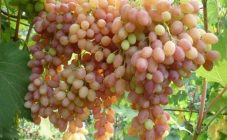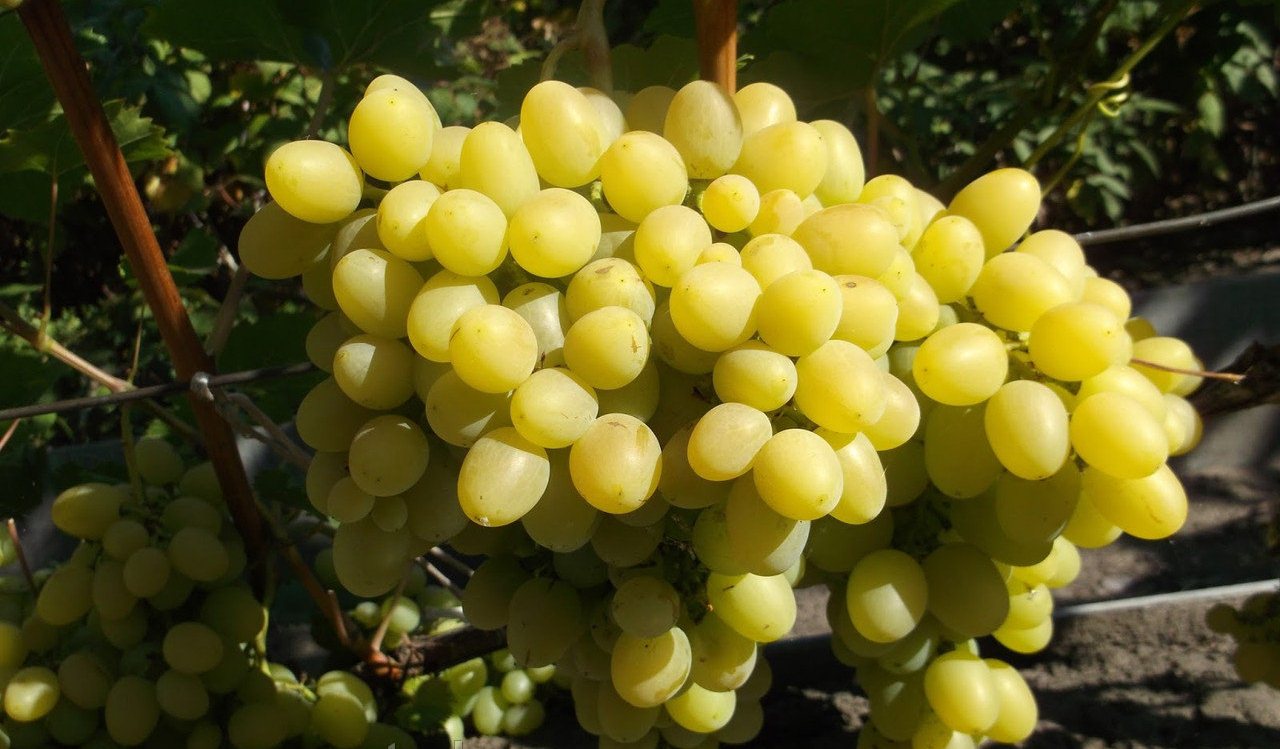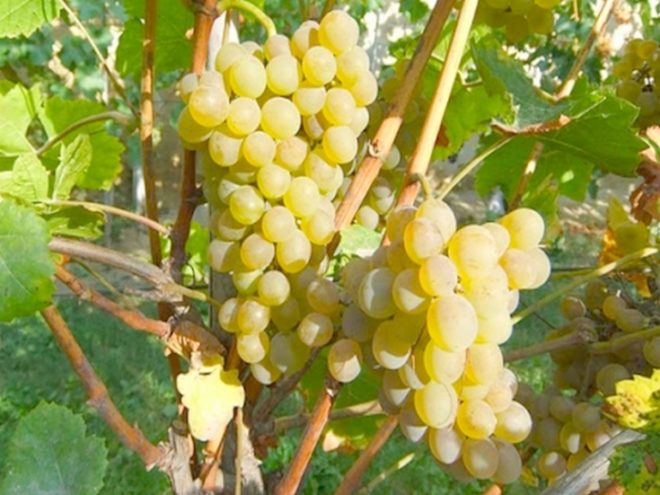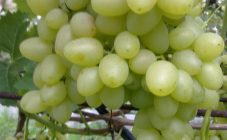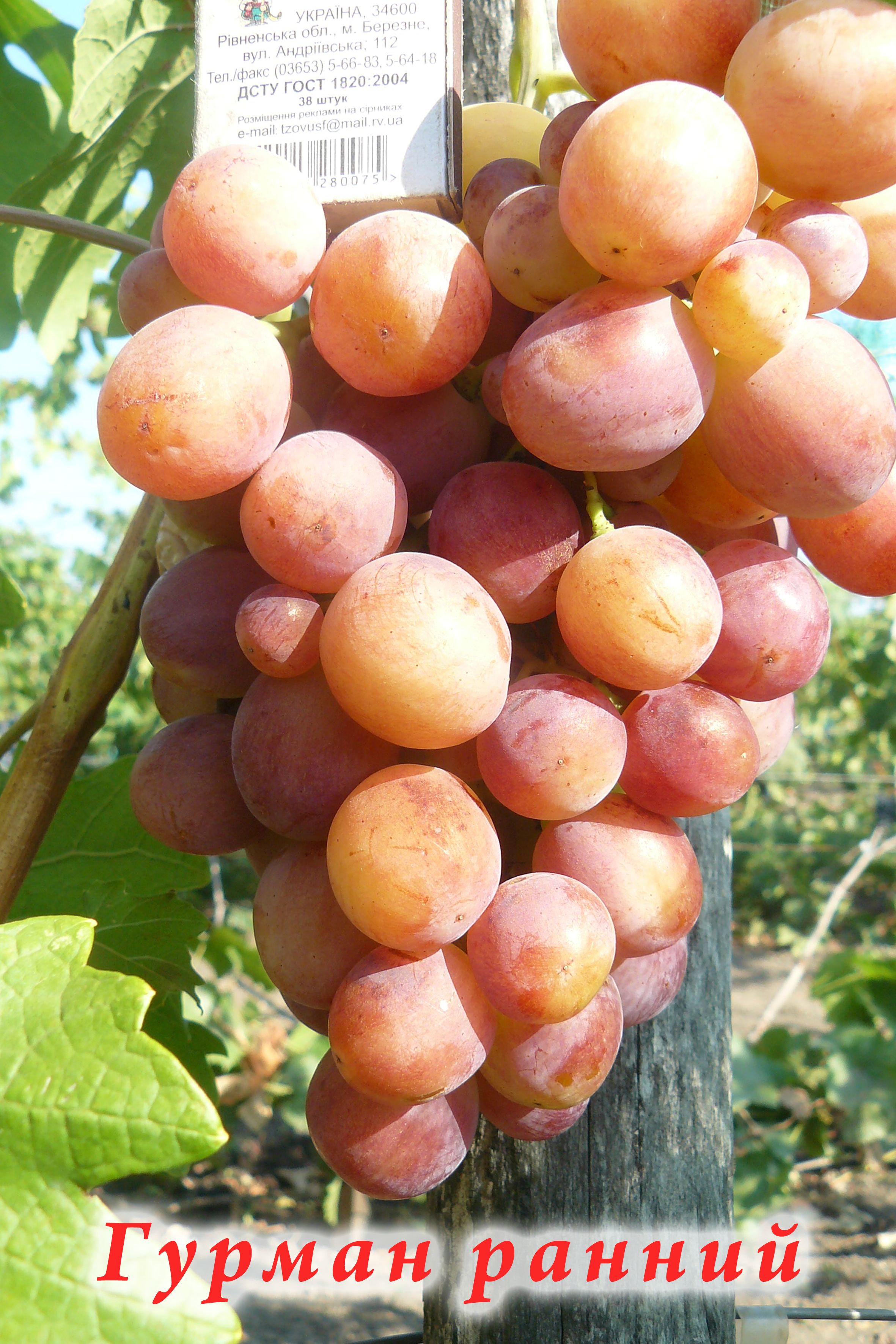Content:
Amur grape is one of the most popular varieties in Russian viticulture, which is perfectly adapted to the changeable climate of our country. He is not afraid of frosts, he is able to recover very quickly even after significant damage. Amur grapes have an easy survival rate and can grow in almost any of the regions of Russia. The varietal feature is excellent taste and high yield, which will help to maintain optimal conditions for its cultivation.
The history of the creation of the variety
By creating the Amur grapes variety, a breakthrough in the history of domestic selection was made by the biologist A.I. Potapenko. He noticed the special properties of wild Amur grapes, which are able to perfectly exist and develop in the difficult conditions of the Far East and Siberia. At the same time, neither the poverty of local soils, nor the proximity of ground waters interfere with it.
The wild form possessed an enviable vitality and insensitivity to diseases of the cultivated vineyard. In addition, the plant was distinguished by abundant fruiting. Every winegrower in the country would dream of obtaining a variety with such characteristics.
Potapenko set out to develop a cultural form based on the potential of a wild relative, which would have all its wonderful qualities. It is known that many varietal vineyards are grown using chemical treatments, since the crop is susceptible to fungal diseases and attacks of phylloxera, a dangerous pest of vineyards. But the dream of the breeder was to develop a variety that could produce a decent harvest without the use of chemicals.
And now, after half a century of intraspecific selection, a new grape variety - the Amur Potapenko hybrid - was obtained with all the declared characteristics. The variety was distinguished by resistance to fungal diseases, and the phylloxera grape pest was defeated due to the fact that the new hybrid grew in regions where this pest simply could not survive.
Description
Amur, Ussuri or Manchurian grapes are distinguished by a very powerful liana, which grows more than 10 m on a support. It has dark green leaves up to 15 cm long. The shape of the leaves can be whole, heart-shaped or three to five-lobed.
An early variety blooms in early June and is dioecious.
In the Moscow region and the middle lane, the fruits ripen in September and become almost black with a bluish bloom. The diameter of the berry is about 1.2 cm. The taste is pleasant, sweet and sour, after freezing it becomes sweet. Grapes are used for making wine, compotes, fruit drinks, jams and preserves. Young leaves are perfect for salads, soups and dolma.
There are several varieties, including Amur breakthrough, Amur Potapenko, Amur white, Amethyst, etc.
Amur white grapes: description and characteristics of the variety
Medium ripening grapes. It is suitable for both wine making and eating. The unpretentiousness of white Amur grapes is a gift for novice winegrowers. Its shoots easily tolerate transplants and take root well in new places. In addition, the vine does not need additional shelter for the winter, it perfectly tolerates negative temperatures down to -40 ° C.
The variety has a conical bunch weighing up to 1 kg. Fruits are yellow and large, oval in shape, weight varies from 2.5 to 4 g. The grapes taste very sweet. Ripens in late August or early September.
Amur white is quite hygrophilous. It is derived from the Amursky breakthrough variety and combines all the advantages of table European varieties and wild Far Eastern grapes.
Liana is a powerful stem, covered with leaves and loose bunches, which can curl up to 30 m in height, in just a year, growth can increase by 2.5 m.
Growing features
The Amur grape is distinguished by its unpretentiousness, prefers acidic and loose soils. Strongly acid peat can serve as an ideal fertilizer for it. Needs pruning and is easy to carry.
In the process of growing in the first couple of years, the bushes must be often loosened and fertilized. In the first year, pruning cannot be carried out, but subsequently pruning is not only possible, but also necessary. This will provide the fruitful shooters with optimal nutrition and help shape the vines.
And so that the branches do not stretch out, their top is pinched, which directs nutrients not into growth, but into the formation of the crop. The pinching is carried out two or three days before the plant begins to bloom.
It is necessary to regularly remove the leaves during the ripening of the fruit, but only those that cover the bunches from the sun. It is allowed to pinch no more than five pieces near each bunch, so as not to worsen the nutrition.
Amur grapes are often used for decorative purposes. An excellent solution would be to plant a seedling near an unsightly wall of an outbuilding, near a fence or a gazebo.
In this case, the depth of the pit for the cuttings should be about 60 cm or slightly more. A drainage layer of broken brick, expanded clay or pebbles is placed at the bottom, followed by a layer of river sand, humus and peat. Ash and a handful of superphosphate can be added to the soil. It is necessary to plant carefully, trying not to damage the root system. After the bush should be watered and do not forget to form a hill of soil around the root collar.
When leaving, the root system is fed in the spring with nitrogen-containing fertilizers, and in the fall with potassium-phosphorus fertilizers. Watering must be strictly at the very root, but watering is stopped a couple of weeks before flowering. For the prevention of diseases, you can spray with Bordeaux liquid, which was used by winegrowers in the 19th century.
Advantages and disadvantages
Amur grapes have many advantages. Among them:
- high yield of the variety;
- ripening of the vine simultaneously with the harvest;
- plastic;
- frost resistance;
- liana will not reduce growth, even if the harvest is very good;
- the ability to quickly recover from damage;
- excellent taste;
- dense skin makes it easy to transport fruits;
- disease and pest resistance;
- unpretentiousness and undemanding care.
The following qualities are considered to be disadvantages:
- rapid growth, hence the need for frequent pruning;
- Harvesting difficulties as long vines cannot easily cut bunches.
Compared to a huge number of advantages, minor disadvantages are easily eliminated by timely pruning of bushes. The Amur grape variety is a real find for the harsh climate of the Far East, Siberia and other difficult climatic zones of Russia. Not only a bountiful harvest with a number of useful properties pleases the Russian gardener, but decorative plantings are also used in many household plots.





